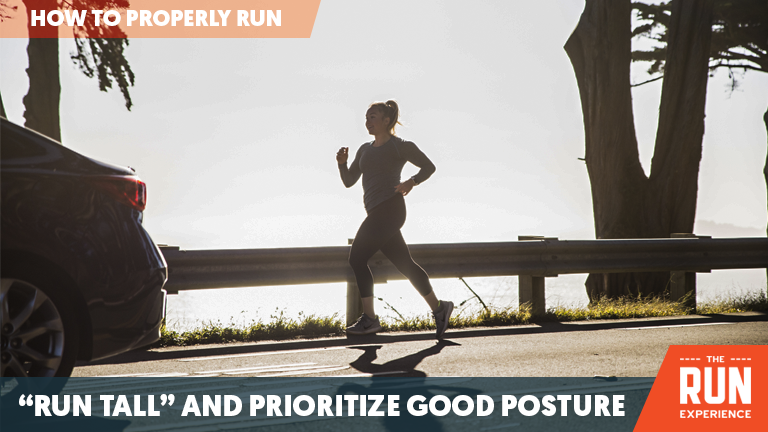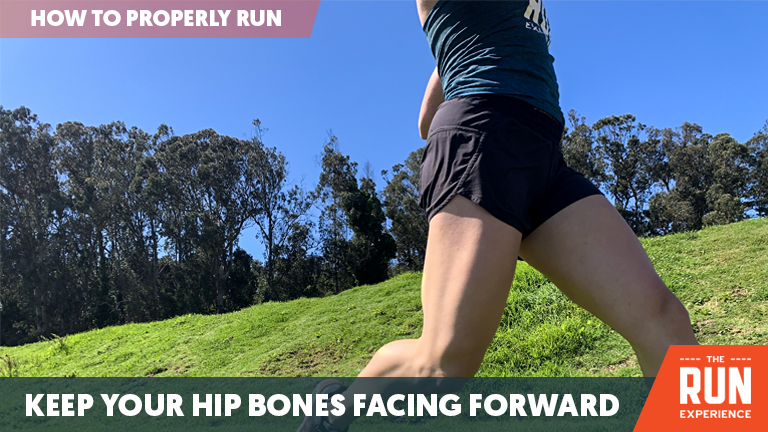Treadmill Running: How to Properly Run on the Treadmill
Get up to speed on the treadmill running tips that'll increase your speed, endurance, and strength—all while keeping yourself injury-free.

Running on a treadmill might not be the most fun way to train, but treadmill running has its place in any athlete’s arsenal. However, getting the most from your treadmill running requires more than just stepping on the machine and getting started—it takes a bit more understanding of the proper running technique, mechanics, and tips.
If you live in a flat area, a treadmill can help you train with incline for mountain races. And if you live in the mountains, it can give your legs a break from the up and down and help you with a more aerobic workout.
However, learning how to run properly on the treadmill isn’t a given. While a treadmill helps you mimic outside running, it’s not quite the same. Treadmill running has a bit of nuance, but it’s not too difficult to get the hang of it.
This article will walk you through treadmill running tips and the best ways to run on a treadmill to maintain your form and enhance your training.
Treadmill Running Tips: Setup & Safety
Getting Set Up
Learning how to start running on a treadmill isn’t too hard—you just need the right expectations.
A good rule of thumb for any treadmill running workout: start slowly. On a treadmill, you can adjust your speed and incline. Take advantage of this gift. When you’re running on the trail, you don’t always have the luxury, especially if you’re starting with an uphill climb.
Speed on most treadmills is measured in miles per hour or kilometers per hour. When you turn on the machine, start at a walking pace, work your way to a jog, and then arrive at your destination pace safely.
The incline is usually measured by percentage. For incline, a typical “hill” like you might find outside is usually between 5-8% grade. You can use that range as a jumping-off point if you are looking to incorporate some hill running into your training.
Feel free to play around—sometimes I love to take my “flat runs” at a 1% or 2% incline just for an added challenge. Consider adding a bit of incline even on days that aren’t necessarily “hill runs.”
Both speed and incline can be adjusted on the front of the treadmill, and on most treadmills, you can also adjust them with buttons on the handrail. Adjusting speed or incline on the handrail is a great option if you are making changes on the fly.
Best Way to Run on a Treadmill Safely
As a safety note, all treadmills have an emergency stop feature. On most machines, it is going to be a magnet that attaches to the treadmill by a thin rope, and the treadmill will stop when you pull the magnet off.
Before you get going on your run, consider playing around with the emergency stop feature. Of course, you want to know where it is in case you need to stop quickly, but you also want to make sure you don’t accidentally stop when you weren’t planning to, as that can be just as dangerous.
If you are a beginning runner, or just new to treadmills, check out these treadmill beginner training tips!
Now that we have our basics out of the way, let’s dive into some treadmill running tips to maximize your workouts and keep you injury-free.
How to Run on a Treadmill
Treadmills are a great way to hone in on your running form and correct any mistakes or tendencies that you have. Unlike on a road or trail run, you are not distracted by cars, obstacles, or other runners on a treadmill.
There is nothing in your way, so you can totally focus on perfecting good running form. And running with proper running form is crucial in minimizing your risk of injury.
Treadmill Running Tip #1: Toes Straight Ahead
To begin, take note of which direction your toes are facing as your foot strikes the ground. You want to be sure that your toes face straight ahead. While your natural tendency may be to turn the feet out or in slightly, doing either of these can strain your knees.
Use the treadmill to train your body to run with your toes straight ahead. If this is a challenge for you, cut back your speed and incline and just run at a slow to moderate speed while you get your feet in line.
Treadmill Running Tip #2: Run Tall

Running with good posture is going to help put together various pieces of proper running form. For example, in order to run tall, you need to engage your glutes as you run.
This is going to keep your pelvis upright and your hip bones facing forward. As we get tired, it’s common for runners to let their hips drop back and to disengage the glutes.

Notice this tendency and correct it; think about engaging your glutes and running tall especially when you feel totally gassed.
This is going to be even more important when you are running with incline. Our bodies’ natural tendency to get up a hill is often to lean forward and rock our hips back. Be sure you are staying tall even as you ascend.
Going along with that, be sure your upper body, your head, and chest, are upright as well. Again, a great way to focus on these form tips is to incorporate a jog into your warm-up, and simply take a look at your run form.
The challenge, of course, will be maintaining that good form when you get tired. But developing a solid grasp of good form at a slow speed will go a long way.
You can build muscle memory around good habits, which will (hopefully) help you out a bit when fatigue kicks in.
Treadmill Running Tip #3: Focus on Your Arm Swing

You want to have a relaxed arm swing that still gives you some power. To do this, don’t let your arms cross the midline of your body. You will generate more power for your run with a linear, front-to-back arm swing, and you will be less prone to injuries that way.
Crossing your arms over your midline as they swing can cause lower back and abdominal issues, as that twisting motion repeated over a long time is strenuous on the muscle groups in your torso. And this version requires more energy.
Instead, just keep your arm swing relaxed and linear and allow that swing to generate power. To dive deeper into running form, check out this article on head-to-toe running form.
Frequently Asked Questions (FAQs)
How to start running on the treadmill?
Start slow. A treadmill has a different, bouncy-like surface, and it’s also a moving conveyor belt—that’s very different than the hard-packed, unmoving ground you’re used to running on.
Give yourself time to adapt. Just because you can run 15 miles outside doesn’t mean you should hop on the treadmill for the first time and crank out the same mileage.
How fast to run on the treadmill?
You can run as fast as you like, just keep in mind that stopping on a treadmill is a bit different than stopping outside. When you want to stop on the treadmill, you’ll need to either jump off the belt onto the sides, pull the emergency button, or gradually slow your speed—all of which have their pros and cons.
How long to run on the treadmill?
There’s no set distance or time to run on the treadmill—you’ll just have to add it to your training plan accordingly. If you’re just starting out, begin with slow, low-mileage treadmill runs. Then, over time, you can gradually amp up your distance and time.
Developing a Treadmill Training Plan
The best way to achieve your running form goals is to practice consistently. For both new runners and experienced runners, developing a training plan for your treadmill runs will help you stay consistent.
A plan allows you to show up to your workout with purpose, and it ensures you’re not repeating the same workout on autopilot every time you use the treadmill.
Whether you find a training plan online or you develop your own, be sure it has a mix of speed and incline. Work in some sprinting days, some incline days, and some distance days.
Having a plan before you get to the gym will leave you with less stress surrounding your workouts.
If you’re looking to up your distance on the treadmill, check out this video:
Be sure your plan incorporates a proper warm-up and cool down always, and has mobility worked into it.
Getting on that foam roller even just for a few minutes every day will greatly decrease soreness, tightness in your hamstrings, and lower back pain.
If it appeals to you, consider looking into a running coach to help tailor your plan to your goals and hold you accountable for your training and mobility.
To get you started, try this treadmill workout! It’s great for beginners, but can also easily be made more difficult by simply adjusting speed and incline within this framework.
Rain or shine, consider jumping on the treadmill for your next training session. Treadmill running might seem dull and monotonous, but it can be a wonderful training tool to add to your repertoire. Perfect your running form on flats and hills so that you can take that technique out on the road for your next race!
